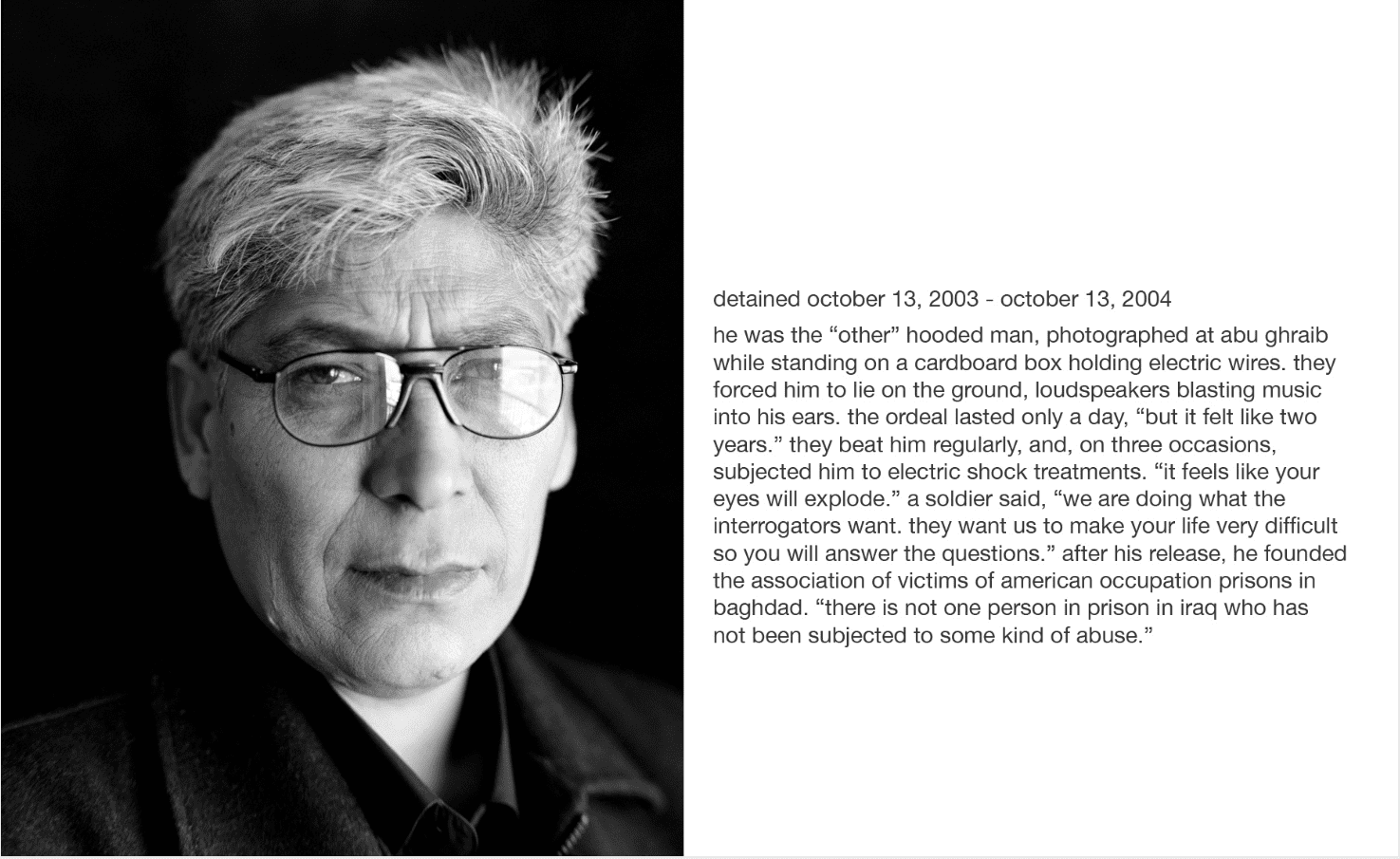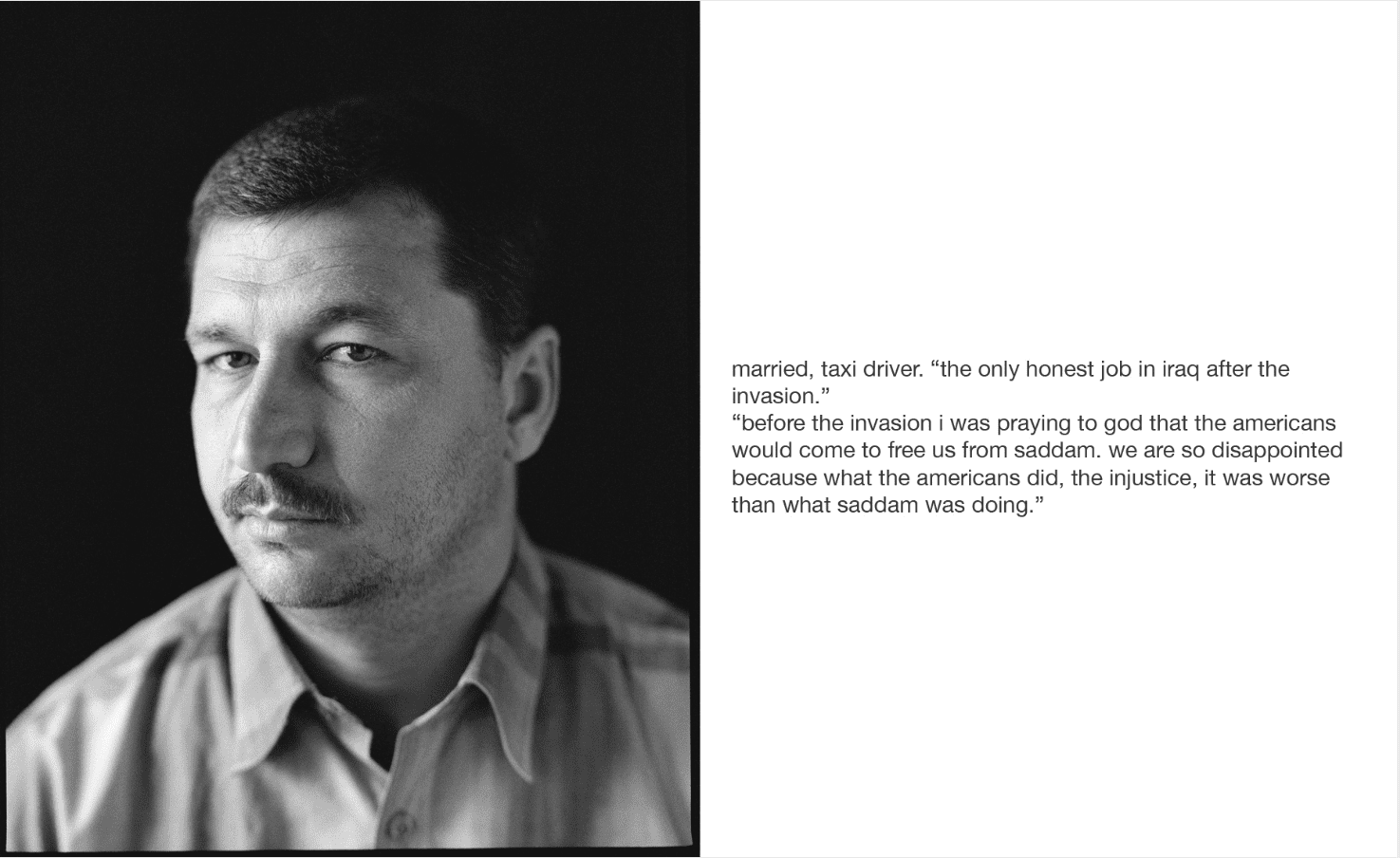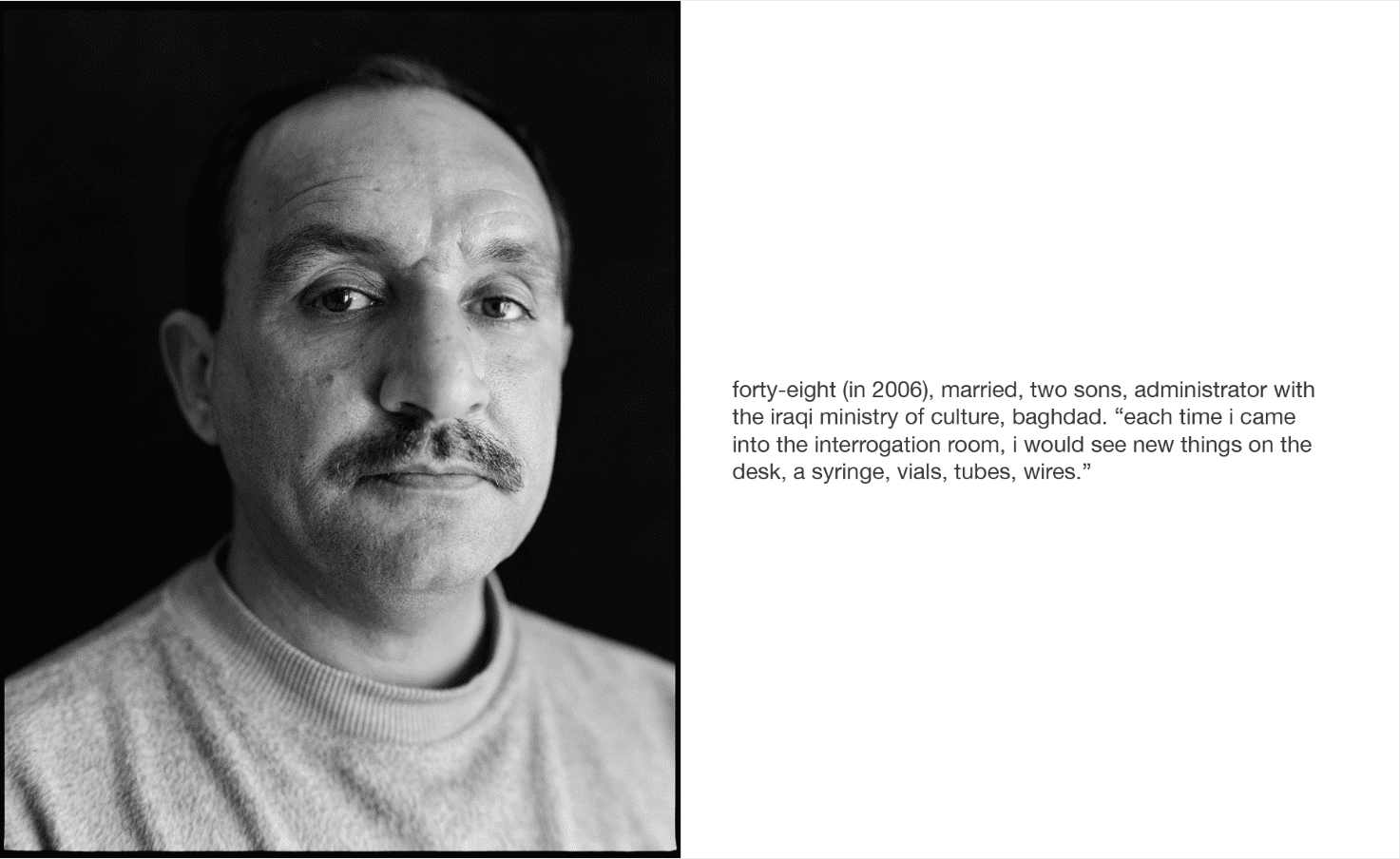More than a decade has passed since we first saw the horrors of Abu Ghraib, but they remain seared into our collective memory.
Piles of bruised, naked bodies lorded over by grinning soldiers, collared men dragged across the floor with dog leashes, triumphant posing over mutilated corpses and, most strikingly of all, a hooded man balanced in a box with electrodes wired to his fingertips. These were tortures explicitly authorised by the US Government. Their aim? To erase the humanity of the detainees.
Chris Bartlett chose to address this injustice through photography, using his camera as a tool to restore the humanity and identity of the subject.
The result is a powerful series of black and white portraits of Abu Ghraib detainees, accompanied by a brief explanation of the tortures they suffered.
The effect is searingly humanising. Bartlett’s photography has the effect of erasing nationality, religion, class, even to some extent, ethnicity.
BJP spoke to him about the genesis of the project, it’s intent and how it continues to evolve.
How did the project begin?
“Back in 2005 I was pretty depressed about the political situation, the Bush administration and the war. A friend of mine had written a story for Vanity Fair about torture and he put me in touch with a lawyer representing some of these detainees. I asked her if I could get involved and she said: ‘If you can get here I’ll open doors for you.'”
“It took over a year to finalise the arrangements, but I wanted to get it right. I could have just gone in with a point n’ shoot camera, put the people in front of a wall and that would have been fine – but I wanted to use the opportunity to fully communicate the horrors of this programme to the world.”
How to people tend to react to the images?
“I quickly discovered that torture is a real conversation stopper – even people who are aware of the issue don’t want to talk about it. There was also this feeling at the time, maybe this is okay, maybe this is just collateral damage. I wanted these beautiful portraits to essentially entrap the viewer. They see the picture and think “that’s a pretty portrait”, then they read the text panel and realise the horrors they went through and think ‘Shit, this is someone who could live in my street. This is someone who has kids and a family. This is just someone who was in wrong place and at the wrong time’.”
What were the aesthetic choices you took?
“I wanted to take the camera – an instrument of their torture – and redeem it. As opposed to using a cheap little Olympus I was shooting 6×7 black and white portraits under natural light. I didn’t want them to look down or depressed or beaten down. I wanted them to have a glimmer of hope, for the audience to connect with them through their eyes. The aim was to give them as much humanity as I could.”
What were their reactions to the finished works?
“Well, in allowing me to take their picture they were risking their lives at the hands of both Coalition forces and their fellow Iraqis. But they were all very appreciative, very happy and kind of honoured to be a part of it. Last year the show went to the Hamburg Triennial and Hajji Ali – the hooded man – made the trip to come and see it. It was incredibly moving.”
What ongoing impact would you like the project to have?
“The thing that’s interesting and different about torture in Iraq and Afghanistan is that it’s the first time a President has ordered it done at this scale – they even brought in their legal team to try to change the laws and find loopholes to justify doing it. This wasn’t an isolated operation – the torture was conducted on a massive scale.
“Abu Ghraib wasn’t even the worst, just where the photos came from. The other camps – the blacksites – had much worse things going on. In the first years of the war there were at any given time 25,000 detainees, whose average length of stay was six months. Over five years that’s 250,000 people – being super conservative lets say that 25% of them (I think 80% is more likely) were tortured. That’s a shitload of people.
“There are records of this: each person had a sheet, a list of techniques that were used on them and who was doing it. It was a torture factory. None of this has been revealed in that context. I don’t understand why no reporters have properly covered it and it’s something I want to try to get out so people understand.
There’s a whole generation of young people who have no idea that any of this even happened, when they see these pictures their jaws drop. From the beginning I didn’t want to preach to the converted. I want people to understand. I want to avoid another Abu Ghraib.”
Find more of Chris’ work here.




